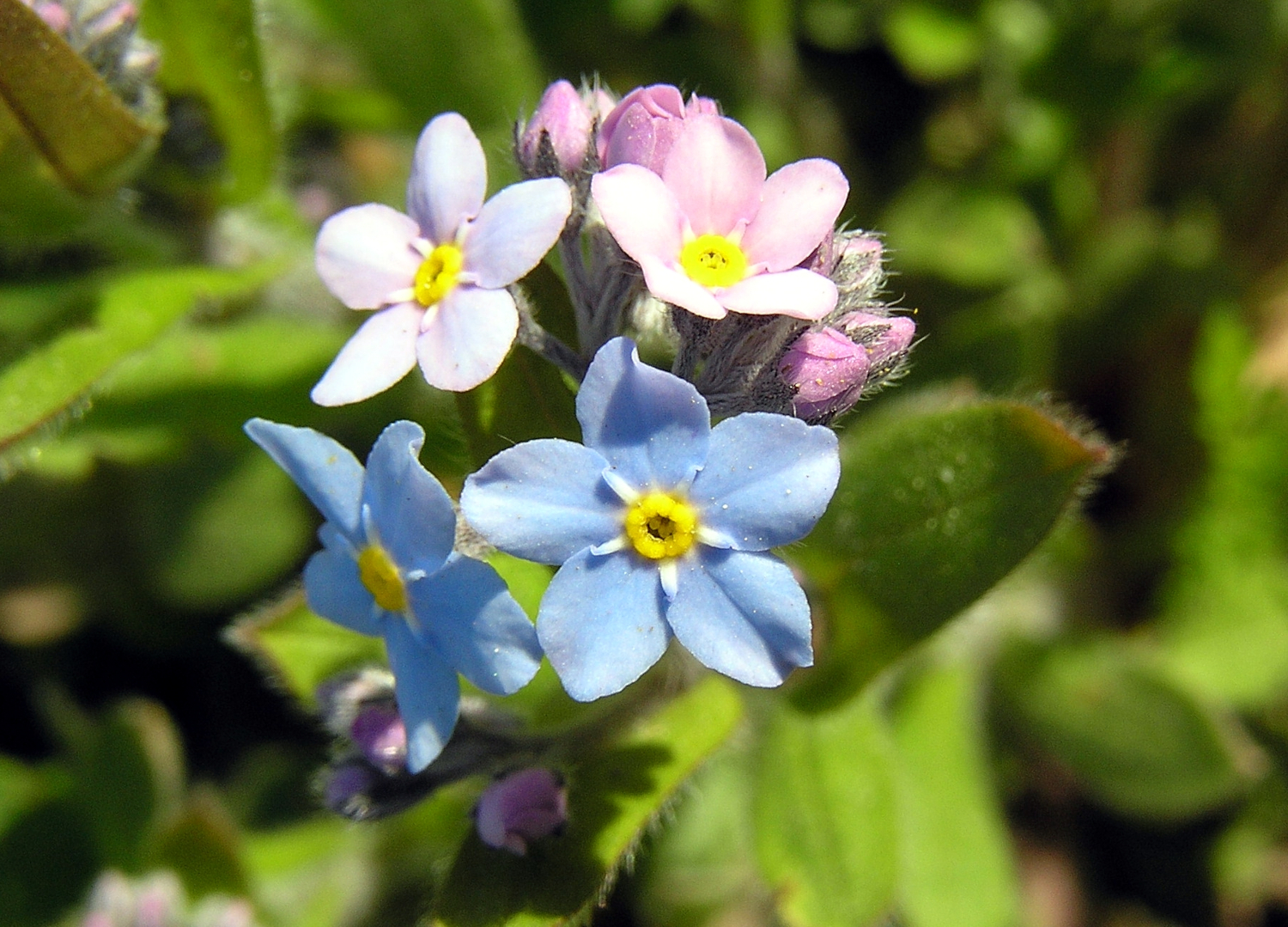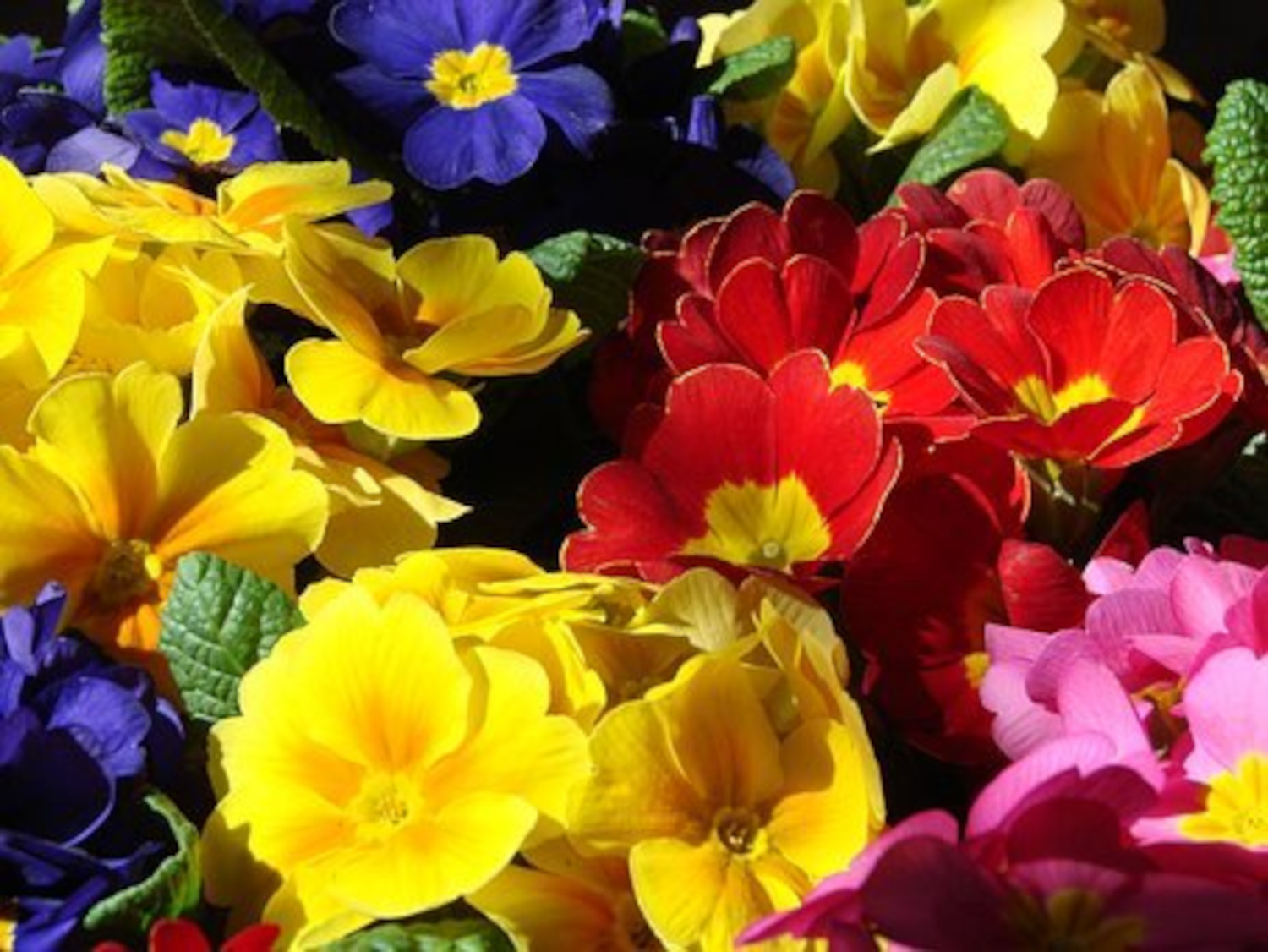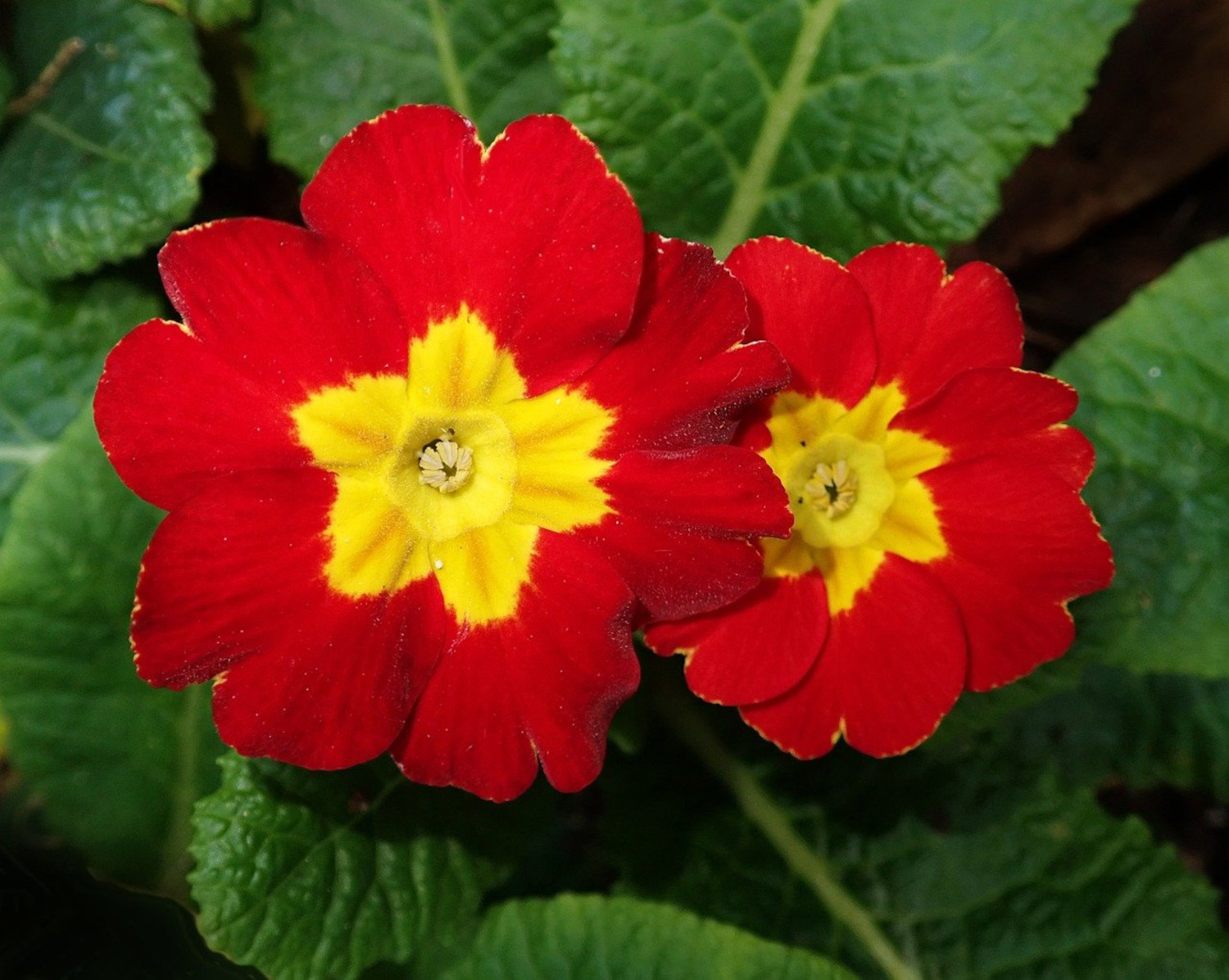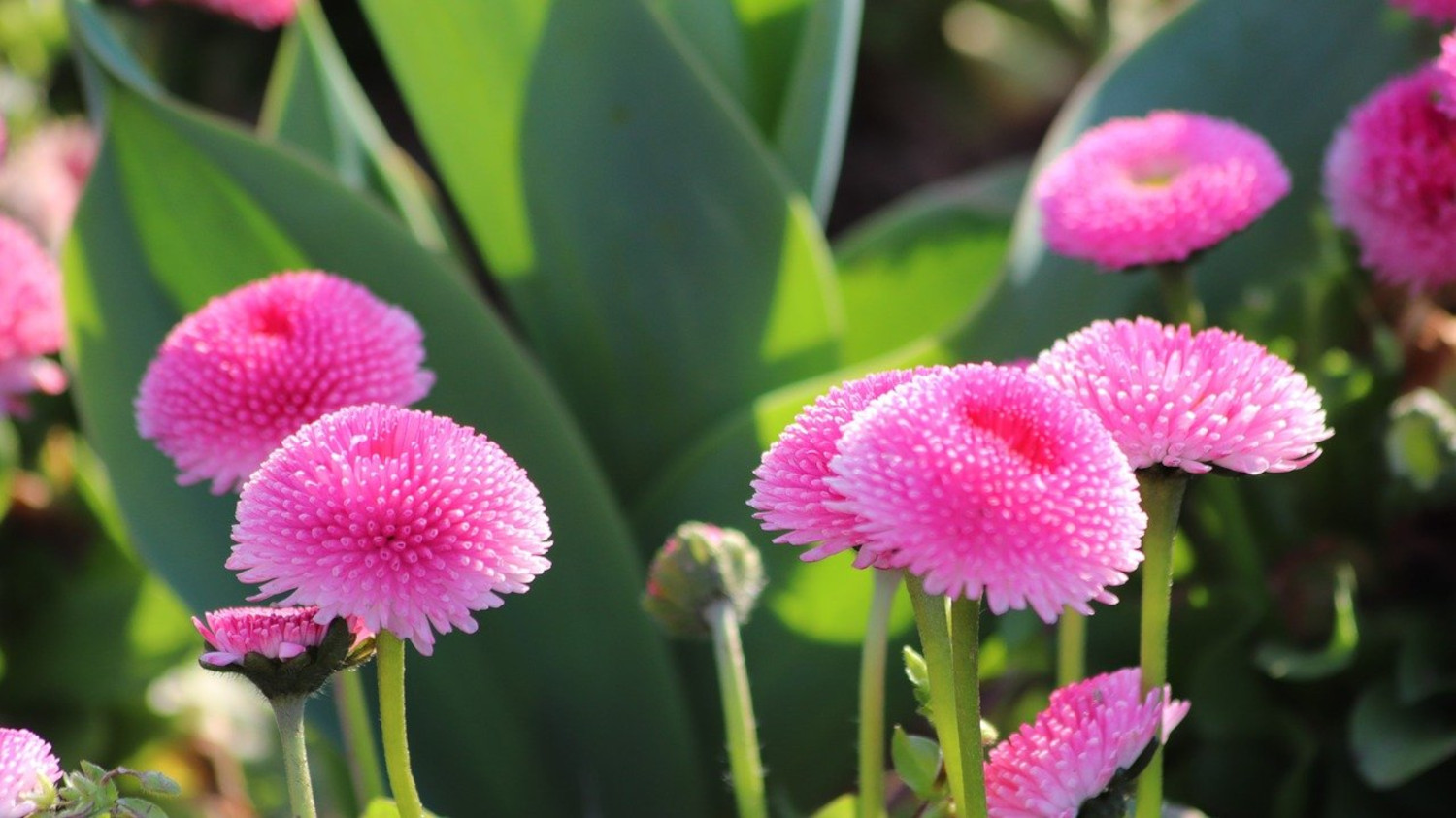Warm up winter landscapes
It’s not too late to bring colour to grey days with winter bedding plants.
Why invest in winter bedding plants?
Although many plants finish blooming by late autumn, leaving gardens looking bleak and bare, not all developers choose to invest in winter bedding plants. Most gardens and outdoor spaces see less footfall in the winter months, it is true, but is that a reason to leave them barren until spring? We don’t think so. Residents will see their gardens and frontages from their windows, and as they approach their houses, and a splash of vibrant colour can do wonders to lift a winter landscape, throwing evergreens into relief and offering good cheer. At the time of writing, we are in a third lockdown, and outdoor spaces have even more importance and resonance in people’s lives – offering solace and hope. The vivid blooms of hardy little bedding plants can help people feel equal resilience to hard times and dark days.

The tiny star-shaped flowers of Mysotis in varying shades.
How should I plant winter bedding plants?
We recommend selecting with robust, good-sized plants, since they will not grow much more in the winter months. Don’t be afraid to think big – you’ll need reasonable quantities to create an eye-catching display. Since the plants are already mature, you can plant them fairly close together (6-9 apart).
How long do winter bedding plants last?
Although there are fewer flowering plants available in the winter months, those there are frequent offer long blooming periods. Some bedding plants, such as forget-me-not (Mysotis), wallflowers (Erysimum) and bedding daisies (Bellis perennis) will continue to bring their dainty delights to landscapes well into spring. Violas and pansies, too, will flower from autumn until the spring months.
Others are typically spring flowering, but will also flower intermittently during winter – these include members of the primula family such as primroses and polyanthus. While primroses and their delicate relatives such as cowslip (Primula veris) and oxslip (Primula eliator) often show petals of gentle, pastel hues, polyanthus varieties are available in a wealth of bright and bewildering colours. Heathers, late-flowering chrysanthemums and cyclamen, too, can add welcome texture and colour to winter gardens.

A rainbow riot of Primula polyanthus varieties.
When are winter bedding plants available?
Whilst the optimum time to plan and plant winter bedding displays is in autumn, bedding plants continue to be available into late winter and early spring. Greenwood still has beautiful specimens of many winter bedding plants available, which could add instant vitality to a development. We discuss some of the best choices for this stage of winter and early spring below.
Polyanthus
These clump-forming primulas are herbaceous or semi-evergreen perennials, with a clump-forming habit which offers great winter coverage. What distinguishes polyanthus from primulas is the multiple blooms to a stem. They usually grow to about 25cm, and mix well with other winter bedding plants to create a varied display, although they also create a stunning aesthetic alone, particularly when the more striking colour combinations are used.
The Rainbow Series comprises various vivacious shades, often boasting more than one bright colour. There’s the fiery polyanthus ‘Rainbow Scarlet Shades’ with vivid red on the petal tips leading to sunny yellow centres. ‘Rainbow Blue Shades’ have similar golden eyes in the centre of flowers in a range of beautiful blue hues, and the blossoms are lightly fragranced too. Nursery manager Marzena recommends buying a Rainbow Mixed selection for a range of wonderful colour combinations.
Other notable varieties include the ‘Crescendo’ series (try ‘Crescendo Golden’ for gorgeous orange-yellow blooms, ‘Crescendo Pink and Rose Shades’ for warming rosy flowers with the familiar amber eye or another mixed selection) and ‘Gold-laced group’, a stunning variety with gold-rimmed rich burgundy petals and a large golden centre.
Keep deadheading your polyanthus to maximise bloom time.

Polyanthus are available in a fantastic range of vivid colours.

The golden yellow ‘eye’ at the centre of the blooms is a feature of many polyanthus varieties.
Bellis
Best planted en masse for greatest impact, these compact little plants are a delight, with their prim pom-pom style blossoms in dainty shades of pink, white and red. We recommend Bellis ‘Bellissima Mixed’ for a riot of colour and blooms.
Bellis will grow to about 15cm in height.

Who could fail to be cheered by the merry pom-pom blooms of Bellis in bright pink?

A blue carpet of Mysotis sylvatica (garden forget-me-not) makes the perfect foil for hyacinths.
Mysotis
Better known as forget-me-not, humble Mysotis is an excellent choice for this time of year. A low-growing and bushy plant, forget-me-nots work well to underplant roses, mix with early-flowering bulbs, in wildflower meadows, rockeries and as edging plants.
The flowers are most commonly blue (and create a wonderful carpet to show off hyacinths or tulips) but are also available in shades of yellow or white. The most well known variety is Mysotis sylvatica (garden forget-me-not) but Myosotis scorpioides (water forget-me-not) is an ideal variety to try for poorly drained soils.
Another reason to plant Mysotis is that they provide a welcome early food source for bumble bees and butterflies, who both enjoy its pollen.
Choose your bedding plants today
All these beautiful plants thrive in rain and snow, encouraging us out into nature to appreciate their glory. For winter bedding plants to brighten your landscape or replace lost plants, contact the G-Team today.

